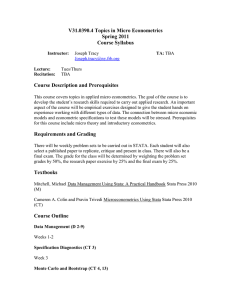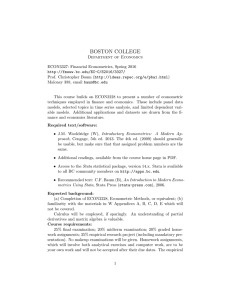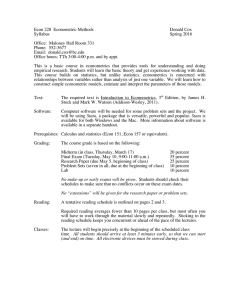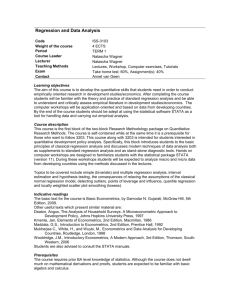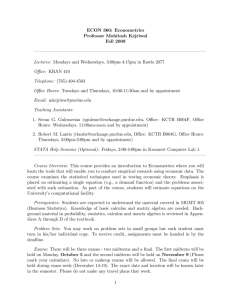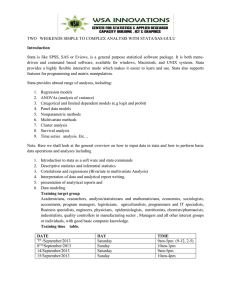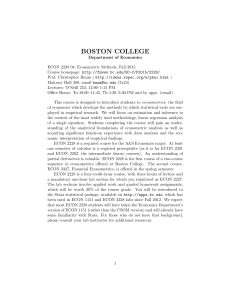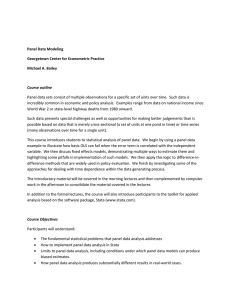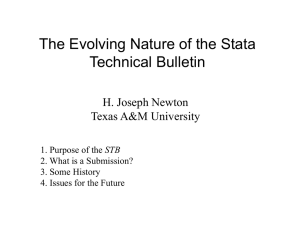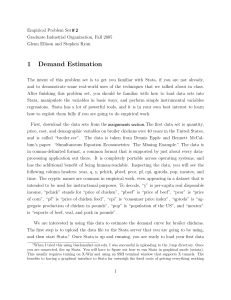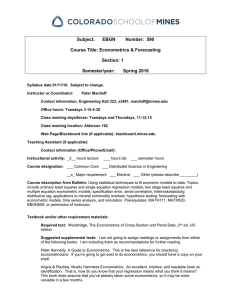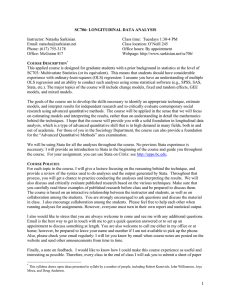BOSTON COLLEGE
advertisement
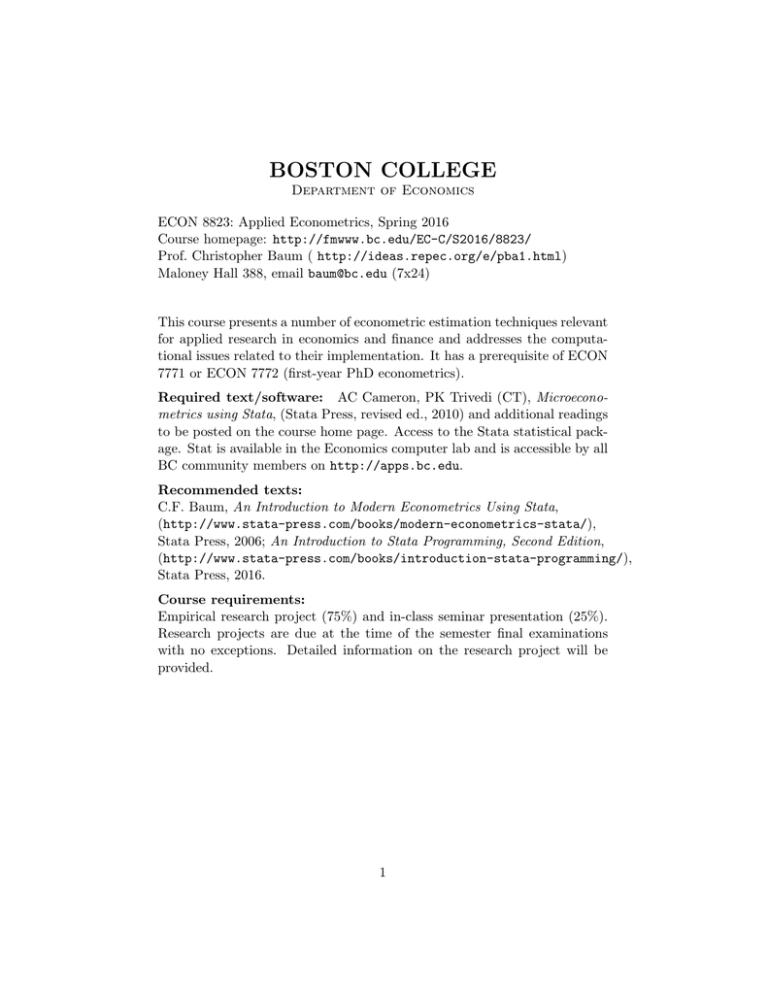
BOSTON COLLEGE Department of Economics ECON 8823: Applied Econometrics, Spring 2016 Course homepage: http://fmwww.bc.edu/EC-C/S2016/8823/ Prof. Christopher Baum ( http://ideas.repec.org/e/pba1.html) Maloney Hall 388, email baum@bc.edu (7x24) This course presents a number of econometric estimation techniques relevant for applied research in economics and finance and addresses the computational issues related to their implementation. It has a prerequisite of ECON 7771 or ECON 7772 (first-year PhD econometrics). Required text/software: AC Cameron, PK Trivedi (CT), Microeconometrics using Stata, (Stata Press, revised ed., 2010) and additional readings to be posted on the course home page. Access to the Stata statistical package. Stat is available in the Economics computer lab and is accessible by all BC community members on http://apps.bc.edu. Recommended texts: C.F. Baum, An Introduction to Modern Econometrics Using Stata, (http://www.stata-press.com/books/modern-econometrics-stata/), Stata Press, 2006; An Introduction to Stata Programming, Second Edition, (http://www.stata-press.com/books/introduction-stata-programming/), Stata Press, 2016. Course requirements: Empirical research project (75%) and in-class seminar presentation (25%). Research projects are due at the time of the semester final examinations with no exceptions. Detailed information on the research project will be provided. 1 To give equal preparation time to those interested in both cross-section/panel research topics and time series research topics, the coverage of time series topics will be interspersed with cross section/panel topics. Class will not meet March 7, 9 (spring vacation), March 28 (Easter Monday), April 13, April 18 (Patriots’ Day). Tentative topics to be discussed Meetings Dates Material 1–9 Jan 20–Feb 17 Cross-Section/Panel I Simulation for regression and testing Instrumental variables techniques Quantile regression Dynamic panel data models General linear models Mixed linear models 10–19 Feb 22–Apr 4 Time Series ARIMA and ARFIMA models Univariate and multivariate ARCH models Reduced-form and structural VARs, VECMs State-space models Dynamic factor models Unobserved components models 20–24 Apr 6–27 Cross-Section/Panel II Propensity score matching, regression discontinuity Binary outcome models Tobit and selection models Count data models Structural equation models 25–26 May 2–4 Project Presentations 2
